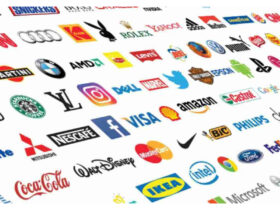Sharing documents safely is more important now than ever before.
With many online tools available—such as email, WhatsApp, Google Drive, and OneDrive—it can be hard to know which ones are truly secure for sharing documents.
You may have experienced the stress of someone accessing your private files without permission or sharing them by mistake. These situations happen often and can lead to serious problems, including data leaks, financial loss, and harm to your reputation.
Using secure document exchange methods helps solve these problems by giving you a safe and trusted way to share information.
No matter who you are—a business owner sharing financial records with clients, a lawyer sending case files, or an individual handling personal documents—secure document exchange gives you confidence that your information is protected.
Foyer is a secure document exchange service designed to protect your sensitive information. With end-to-end encryption, multi-factor authentication, and authorization controls, we ensure your documents stay safe. Try out Foyer free for 14-days, no commitment necessary.
A helpful way to start is by using a secure document exchange portal. These services let you control who can access your documents, which helps prevent data leaks.
These portals can also match your company’s look and include features like e-signatures and tracking tools. This is especially helpful for industries such as law, accounting, healthcare, and finance, where keeping data safe is a top priority.
For example, an accounting firm can use a secure portal to send financial reports to a client. Only the intended client can view the documents. A law firm can use it to store and send private case files while following privacy rules.
Let’s take a closer look at what secure document exchange means and how you can use it to safely share files online.
What Is a Secure Document Exchange?
Secure document exchange is the process of safely sending documents between two people or groups. These might be individuals, clients, or businesses. The goal is to keep private information safe from unauthorized access.
There are two times when your documents need protection: when they are being sent and when they are stored.
In-transit means the document is moving from one place to another—like being emailed or uploaded. If the transfer is not protected, someone could intercept it.
At-rest means the document is stored on a device or server. Even when not being shared, it still needs protection from unwanted access.
Using encryption during both sending and storage is essential. Encryption changes the document into a code that cannot be read unless someone has the correct key to unlock it. This keeps your information safe, even if someone else gets access.
When documents are traveling through the internet, in-transit encryption keeps them secure. This often uses secure web connections like HTTPS or encrypted email services.
At-rest encryption protects files stored on a server or device. It encrypts the files before saving them so that no one without permission can read them, even if they gain access.
Another key part of secure document sharing is authorization—making sure that only the right person can access the document.
Secure document exchange services help manage this. They include features like identity checks before allowing access. You can also limit who can see or edit the files, which protects them from being changed or shared by mistake.
For example, an accounting firm may use one of these services to ensure that only the correct client can view a financial report. This keeps it away from other clients or outsiders.
You can also set user permissions, deciding who can view, edit, or forward each file. This helps you avoid any unwanted sharing of private information.
Do You Need a Secure Document Exchange Portal?
If you are only sending a few basic files, you might not need a full secure portal. You can probably manage with email or simple cloud tools for personal or light use.
But if you want convenience, custom options, or strong permission controls, a secure portal might be worth exploring. These services are made for more advanced needs, especially if you handle private documents often.
One benefit is convenience. You can manage all your document exchanges in one place, instead of switching between different tools. It helps you stay organized and follow the same process each time.
Customization is another plus. Unlike basic file tools, secure portals let you adjust the look and feel to match your brand. You can change the logo, colors, and layout to make it feel like part of your business.
Authorization features help you stay in control. Unlike simple file sharing, these portals let you decide exactly who can see, edit, or forward each document. This reduces the chance of data being shared by mistake.
Here are a few things to think about when deciding whether you need one of these portals:
- Budget – Think about how much you can spend. Portals often have subscription costs, but the added security and features may be worth it.
- Number of clients – If you work with many clients or partners, a portal helps keep things organized and secure.
- File size – If you’re sending large files, a portal might handle them better than email or basic storage services.
- How often you send documents – If you send files regularly, a portal can save time and lower the chance of errors.
Each portal is a little different. Some may limit how many people you can share with or the size of files. That’s why it’s helpful to make a list of what you need before choosing one.
Ask yourself:
- Do you want to brand the portal to match your business? (This is called white-labeling.)
- Do you need strong permission settings so only certain people can access each file?
- Do you want extra tools like custom forms, e-signatures, or logs of document activity?
If you decide to go with a secure portal, you’ll get several helpful features:
- White-labeling – Customize the portal with your logo, colors, and design to match your business.
- Custom setup – Set up permissions, workflows, and layouts to fit your process.
- Custom forms – Easily collect information from clients without back-and-forth.
- E-signatures – Get documents signed quickly and securely, often using trusted tools like DocuSign.
- Secure file sharing – Clients can upload and download files safely.
- End-to-end encryption – Keeps documents protected during transfer and while stored.
- Mobile support – Access the portal from any device, anytime.
One strong example is Foyer. It has many helpful features and is budget-friendly. It includes secure file sharing, custom forms, a knowledge base, eSignature tools, and an Outlook email add-in.
Foyer works on all devices without needing a separate app. You can also brand it to match your business. It uses strong encryption and tracking tools to keep your files safe.
Top 5 Methods for Secure Document Exchange
If you’ve decided that you need a secure way to share documents, here are five reliable methods to consider. Each one has pros and cons, so choose what fits your needs best.
Method 1: Secure Document Exchange Portals
These are built for safely sending private documents. They offer:
- End-to-end encryption – Keeps documents protected from the moment they leave your device to when they arrive.
- Access controls – Set who can view or change files.
- Audit trails – Track who opened or changed the file and when.
- Multi-factor authentication – Adds extra steps to confirm the user’s identity.
These portals often support uploads, downloads, custom forms, and tools like DocuSign for e-signatures. You can also use them from mobile devices.
Method 2: Cloud Storage Services (Google Drive, OneDrive, iCloud)
These tools are widely used and secure, with features like:
- Encryption – Protects files while moving and while stored.
- Access settings – You can choose who can view or edit.
- Backup and redundancy – Files are copied across different servers for safety.
- Compliance – Meets standards like GDPR and HIPAA.
You can work with others on documents in real time and share them easily. Mobile apps also make them easy to use anywhere.
Method 3: Encrypted Email with Attachments
This method uses email, but with added protection:
- End-to-end encryption – Only the sender and receiver can read the email.
- Public Key Infrastructure (PKI) – Uses keys to encrypt and decrypt messages.
- Digital signatures – Confirms the email came from you and was not changed.
Tools like ProtonMail or Outlook add-ins help you send secure emails without changing your usual routine.
Method 4: Secure File Transfer Protocol (SFTP)
SFTP is used for moving files between servers or computers:
- SSH encryption – Protects both the files and the commands used to transfer them.
- User authentication – Uses passwords or key files to confirm identity.
- Integrity checks – Makes sure files were not changed in transit.
- Works well with firewalls – Uses one connection, usually on port 22.
This method works best for businesses that send large files often and need to automate transfers.
Method 5: Encrypted Messaging Apps (like Signal and WhatsApp)
These apps are easy to use and safe:
- End-to-end encryption – Messages and documents are private.
- Forward secrecy – Each session has a new key, so older chats stay protected.
- Minimal data storage – These apps don’t store much user data.
You can send documents, images, and other files as attachments. It’s a good choice for simple, quick sharing with strong privacy.











